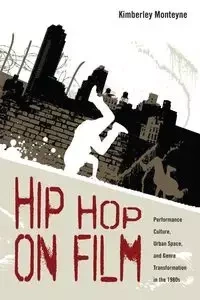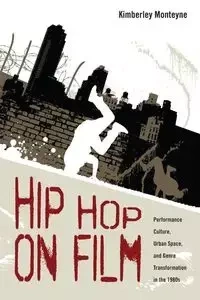Hip Hop on Film - Kimberley Monteyne
Hip Hop on Film - Kimberley Monteyne
- Performance Culture, Urban Space, and Genre Transformation in the 1980s
AutorzyKimberley Monteyne
EAN: 9781496802620
Symbol
083FBO03527KS
Rok wydania
2015
Elementy
288
Oprawa
Miekka
Format
15.2x22.9cm
Język
angielski

Bez ryzyka
14 dni na łatwy zwrot

Szeroki asortyment
ponad milion pozycji

Niskie ceny i rabaty
nawet do 50% każdego dnia
Niepotwierdzona zakupem
Ocena: /5
Symbol
083FBO03527KS
Kod producenta
9781496802620
Rok wydania
2015
Elementy
288
Oprawa
Miekka
Format
15.2x22.9cm
Język
angielski

A reclamation and interpretation of a once-dismissed aspect of American film history
Early hip hop film musicals have either been expunged from cinema history or excoriated in brief passages by critics and other writers. Hip Hop on Film reclaims and reexamines productions such as Breakin' (1984), Beat Street (1984), and Krush Groove (1985) in order to illuminate Hollywood's fascinating efforts to incorporate this nascent urban culture into conventional narrative forms. Such films presented musical conventions against the backdrop of graffiti-splattered trains and abandoned tenements in urban communities of color, setting the stage for radical social and political transformations. Hip hop musicals are also part of the broader history of teen cinema, and films such as Charlie Ahearn's Wild Style (1983) are here examined alongside other contemporary youth-oriented productions. As suburban teen films banished parents and children to the margins of narrative action, hip hop musicals, by contrast, presented inclusive and unconventional filial groupings that included all members of the neighborhood. These alternative social configurations directly referenced specific urban social problems, which affected the stability of inner city families following diminished governmental assistance in communities of color during the 1980s.
Breakdancing, a central element of hip hop musicals, is also reconsidered. It gained widespread acclaim at the same time that these films entered the theaters, but the nation's newly discovered dance form was embattled--caught between a multitude of institutional entities such as the ballet academy, advertising culture, and dance publications that vied to control its meaning, particularly in relation to delineations of gender. As street-trained breakers were enticed to join the world of professional ballet, this newly forged relationship was recast by dance promoters as a way to invigorate and "remasculinize" European dance, while young women simultaneously critiqued conventional masculinities through an appropriation of breakdance. These multiple and volatile histories influenced the first wave of hip hop films, and even structured the sleeper hit Flashdance. This forgotten, ignored, and maligned cinema is not only an important aspect of hip hop history, but is also central to the histories of teen film, the postclassical musical, and even institutional dance. Kimberley Monteyne places these films within the wider context of their cultural antecedents and reconsiders the genre's influence.
Kimberley Monteyne, Vancouver, British Columbia, Canada, is currently teaching at the University of British Columbia and has also taught at New York University and the Chelsea College of Art (UK). Her work has appeared in Youth Culture in Global Cinema.
EAN: 9781496802620
EAN: 9781496802620
Niepotwierdzona zakupem
Ocena: /5
Zapytaj o produkt
Niepotwierdzona zakupem
Ocena: /5
Napisz swoją opinię

